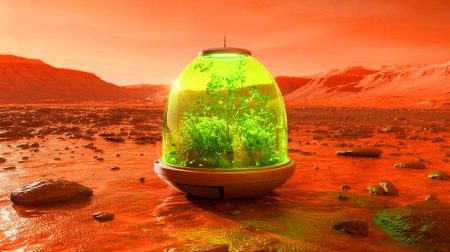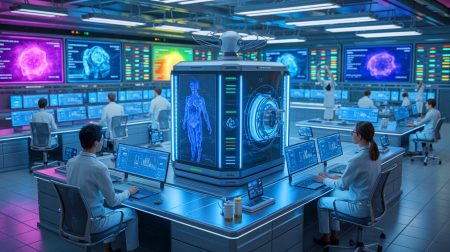| IN A NUTSHELL |
|
The ambition to create sustainable living conditions on Mars has always driven the scientific community to explore innovative solutions. Recently, a groundbreaking experiment conducted by the team at the Harvard John A. Paulson School of Engineering and Applied Sciences (SEAS) has brought us one step closer to this goal. By successfully growing green algae inside a bioplastic habitat designed to mimic the Martian environment, researchers have demonstrated the potential of closed-loop systems for space habitation. This development could herald a new era of self-sustaining habitats, providing a viable solution to the challenges of long-term space exploration.
The Visionary Experiment Unveiled
The concept of colonizing Mars has captivated organizations like NASA, SpaceX, and others aiming to establish human presence on the Red Planet. However, building livable spaces on Mars poses significant challenges, including the need for protection from intense radiation without relying heavily on resources from Earth. The SEAS team has tackled this issue by experimenting with biomaterial habitats, a promising avenue for sustainable living in space.
In their experiment, researchers used a common green algae, Dunaliella tertiolecta, placed inside a 3D-printed chamber made from polylactic acid, a type of bioplastic. This chamber was designed to replicate Mars’ thin atmosphere, with pressure conditions over 100 times lower than those on Earth. Remarkably, the bioplastic chamber blocked harmful UV radiation while allowing enough light for photosynthesis, enabling the algae to flourish despite the extreme conditions.
By recreating Mars-like conditions, including a harsh, carbon dioxide-rich environment with a mere 600 Pascals of atmospheric pressure, the researchers proved that algae could survive. The chamber’s pressure gradient stabilized liquid water, a significant achievement given the difficulty of maintaining liquid water at such low pressures.
Potential of Self-Sustaining Habitats
The success of this experiment highlights the potential of bioplastics as a key component in developing renewable systems that can sustain life in otherwise lifeless environments. Unlike traditional industrial methods, this approach mimics natural growth and sustainability, reducing the reliance on costly manufacturing and recycling processes.
Professor Robin Wordsworth and his team have been at the forefront of innovative solutions for extraterrestrial habitats, previously utilizing silica aerogels to create a greenhouse effect on Mars. This, combined with the new bioplastic habitat, could address temperature and pressure challenges, creating a comprehensive solution for supporting life on Mars.
The research, published in the journal Science Advances, outlines the team’s plans to test these habitats under vacuum conditions, relevant for lunar and deep-space applications. Their ultimate goal is to design a fully functional closed-loop system for producing habitats, paving the way for sustainable living beyond Earth.
Trump Administration Downplays Record Carbon Dioxide Surge in 2024
Innovative Materials for Space Habitats
The exploration of unconventional building materials has been a focal point for researchers aiming to establish human presence on Mars. Previous studies have explored using fungal mycelium to grow structures and developing a concrete-like material called “StarCrete” from extraterrestrial dust, potato starch, and salt. These efforts underscore the importance of finding feasible, sustainable solutions to the challenges of space habitation.
The SEAS team’s use of bioplastics, combined with their earlier work on aerogels, represents a significant advancement in creating viable habitats for Mars. These materials not only offer protection from radiation and harsh environmental conditions but also enable the growth of essential life forms, such as algae, which could be crucial for producing oxygen and food in space.
As the scientific community continues to explore these innovative materials, the potential for creating livable, self-sustaining habitats on Mars becomes increasingly tangible, bringing us closer to realizing the dream of interplanetary colonization.
What Lies Ahead for Extraterrestrial Habitats
With the successful demonstration of algae growth in bioplastic habitats, the SEAS team has laid the groundwork for future research into sustainable space living. The next phase involves testing these habitats in more extreme conditions, such as vacuum environments, to determine their viability for lunar or deep-space applications.
The potential applications of this research extend beyond Mars, offering insights into how humans might live and thrive on other celestial bodies. By developing closed-loop systems, researchers aim to create environments where resources are continuously recycled, reducing the need for resupply missions from Earth.
The implications of this research are profound, opening the door to new possibilities for human exploration and habitation beyond our planet. What innovations will the next generation of scientists bring to further push the boundaries of space exploration?
Did you like it? 4.6/5 (23)








Wow, algae on Mars! Does this mean we’ll be able to grow food there soon? 🍅